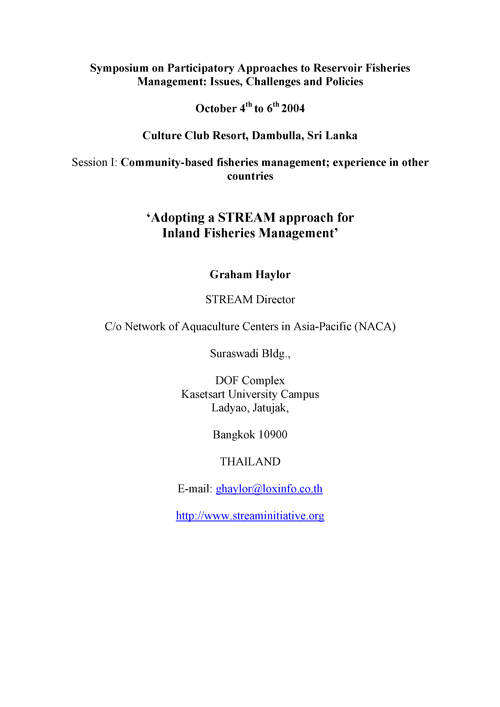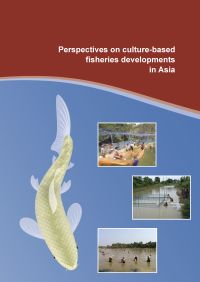Adopting a STREAM approach for inland fisheries management
8 September 2004 | Graham Haylor | 605 Downloads | .pdf | 176.2 KB | Freshwater finfish, Inland aquaculture, Livelihoods, gender and social issues, Stock enhancement, Sri Lanka
This paper advocates strategies, processes and practices that enable: livelihoods approaches rather than resource-based approaches, ‘direct’ institutional and policy development, rather than ‘project demonstrations’, and support for regional, national and local communications.
A resource-focused approach, can over simplify how (poor) people interact with (aquatic) resources (such as reservoirs). With a resource-focused approach, if people don’t take up a technology, or a policy doesn’t work, the approach will not tell us why and how to make changes. A livelihoods approach can identify people’s access to resources, their objectives for the resources to which they have access, the desirable (and undesirable) properties of resources for particular activities, skills, and knowledge levels; support networks, infrastructure and services; interests, motivations, circumstances and what people can achieve, and the effect of policies and other factors which influence all of these. This can provide the detail that is needed to develop with stakeholders appropriate supporting institutions and policies.
Instead of projects, which aim to demonstrate new ways of working, governments sometimes seek support to change institutions and policies directly. The ‘direct strategies’ that are emerging bring together expertise, and relevant knowledge from farmers, fishers, people’s organizations, local government and NGO service providers, state-level and national policy shapers and policy makers to identify and share better practices, and learning from elsewhere. Negotiating a direct role in change processes may have more impact than demonstrating an approach in a project context.
Finally, to facilitate participation in resource management, five communication elements are highlighted. The strategy here is to facilitate ‘links’: to information sources and media, to learning (research, development, networks, and other sectors), to service providers (Governments, non-government organizations), to policy makers (closing discourse gaps e.g. between fishers and policy makers) and to pay attention to sharing meaning across languages and cultures and with fishers and farmers who are poor (via networks of dedicated Communication Hubs).
The three main components of the STREAM approach discussed in this paper are not pursued separately, for they are closely interlinked. Understanding people’s livelihoods helps to identify the important characteristics and requirements of supporting institutions and policies and where communications links must be built so that people can participate in shaping policies and institutions that support their objectives.
This paper was presented at the Symposium on Participatory approaches in reservoir fisheries management: Issues, challenges and policy, October 4-6th 2004 at the Culture Club Resort, Dambulla, Sri Lanka hosted by the National Aquaculture Development Authority in collaboration with FAO, Sri Lanka Association for Fisheries and Aquatic Resources and the Aquaculture Resources Development and Quality Improvement Project.
Creative Commons Attribution.

